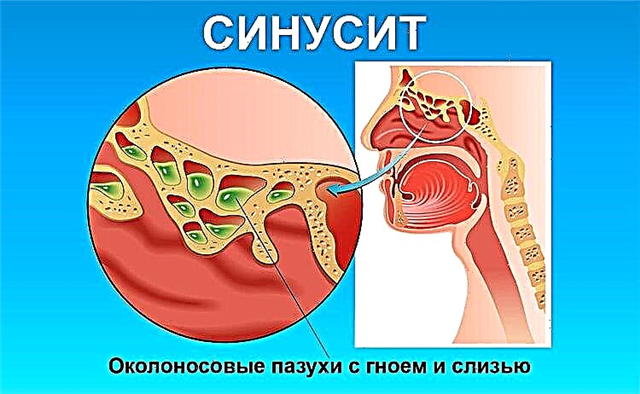A congested ear is a symptom that signals excessive pressure on the inner or outer side of the ear membrane. The unpleasant sensation often occurs when flying, diving, climbing mountains, or developing rhinitis. The increase in the difference between internal and external pressure on the ear membrane leads to its tension. As a result, the elasticity of the membrane decreases, which affects the quality of the conduction of sound signals.
A common cause of a feeling of congestion is a sharp change in blood pressure. How much pressure does your ears clog? According to experts, congestion can be caused by both hypotension and hypertension. Due to a decrease or increase in the tone of blood vessels in the body, pathological changes occur, leading to the appearance of an unpleasant symptom.
Causes

The feeling of congestion in most cases is accompanied by hearing impairment and the appearance of autophony, in which a person clearly hears his own voice in his head. If the pressure difference on the ear membrane is high, there are sharp shooting pains, dizziness and a sensation of fluid overflow in the ear. The main provocateurs of ear congestion include:
- rhinitis;
- tubo-otitis.
- hypertension;
- hypotension;
A key cause of ear popping is pressure changes that reduce the elasticity of the ear membrane. When a sound signal enters the external auditory canal, the ear membrane experiences slight vibrations, as a result of which sound amplification does not occur. For this reason, a person experiences an uncomfortable feeling of stuffiness and a sharp decrease in hearing.
Salpingootitis
Salpingootitis (eustachitis) is an otolaryngological disease characterized by inflammatory processes in the mucous membrane of the middle ear and the Eustachian tube. The onset of pathology is most often due to the development of infection in the upper respiratory tract.  When pathogens multiply in the nasopharyngeal cavity, the Eustachian tube becomes infected, from where pathogens enter the tympanic cavity.
When pathogens multiply in the nasopharyngeal cavity, the Eustachian tube becomes infected, from where pathogens enter the tympanic cavity.
As a result of inflammation, the mucous membrane of the auditory tube increases many times over, which leads to a violation of its aeration function. The cells of the mucous epithelium begin to absorb the oxygen remaining in the ear cavity, as a result of which the pressure in the ear drops sharply. For this reason, the ear membrane is pressed into the tympanic cavity, which leads to a decrease in its elasticity and, accordingly, a feeling of congestion.
Rhinitis
When does the ear blockage and how much pressure contributes to the onset of the symptom? Rhinitis (runny nose) is one of the most common causes of changes in internal pressure on the ear membrane, resulting in a feeling of congestion and fluid overflow in the ear. Inflammation of the nasopharyngeal mucosa, provoked by viruses or bacteria, leads to tissue edema. The result is a narrowing of the lumen in the Eustachian tube, which connects the middle ear cavity with the nasopharynx.
Important! With a runny nose, you cannot sharply pump air into the nasal passages to release them from accumulated mucus. A sudden increase in pressure on the ear membrane can damage it.
The auditory tube performs a ventilation function, i.e. helps to equalize external and internal pressure on the ear membrane. With the development of rhinitis, the inner diameter of the canal narrows, as a result of which the pressure in the ear decreases significantly, which leads to the depression of the tympanic membrane inside the ear. This becomes the key cause of the unpleasant sensation.
Arterial hypertension
Hypertension (arterial hypertension) is a disease characterized by an increase in blood pressure. According to experts, a common cause of the development of the disease is impaired blood circulation, which can be caused by a number of provoking factors:
 great physical activity;
great physical activity;- serious injury;
- cardiovascular diseases;
- high cholesterol levels;
- overweight;
- hypodynamia;
- addictions;
- hereditary predisposition.
When a patient pawns his ears under pressure, this indicates a spasm of blood vessels, as a result of which blood circulation is impaired. The narrowing of the lumen in the vessels is the cause of poor tissue oxygen supply, as a result of which the air in the ear cavity becomes discharged, i.e. a low vacuum is created. In addition to ear congestion, signs of the development of hypertension will be:
- memory impairment;
- headache;
- swelling of tissues;
- bleeding from the nose;
- fast fatiguability.
Important! Untimely reduction of high blood pressure can cause a hypertensive crisis, heart attack or stroke.
Change in external pressure
According to experts, an increase in external atmospheric pressure on the ear membrane is one of the causes of congestion. The eardrum is an elastic membrane that is impermeable to air. It is innervated by the nerve endings of the tympanic nerve, which originates in the glossopharyngeal branch.
Excessive onslaught of air masses on the membrane leads to its deformation, as a result of which it does not resonate sounds coming from outside. As a result, a weak signal is transmitted to the auditory ossicles, which is subsequently received and processed by the auditory receptors. As a result, a person hears a “muffled” sound, which indicates congestion in the ears.
 Untimely equalization of internal and external pressure on the ear membrane causes barotrauma.
Untimely equalization of internal and external pressure on the ear membrane causes barotrauma.
A sharp increase in atmospheric pressure can be associated with:
- air travel;
- immersion under water;
- ascent to the mountains.
A critical deformation of the ear membrane can cause shooting pains.
Hypotension
Can the ears become obstructed with low pressure? Hypotension is less common than hypertension, but it can cause the ears to become blocked. Low blood pressure is caused by cardiovascular diseases, insufficient vascular tone, significant blood loss, depression, neuroses, etc. According to statistics, most often hypotension occurs as a result of a deterioration in vascular tone. This leads to a thinning of the walls of the capillaries, as a result of which their permeability increases. For this reason, the swelling of the mucous membranes of the ENT organs, in particular the Eustachian tube, increases. A decrease in its lumen will inevitably lead to the formation of a vacuum in the middle ear cavity, as a result of which there is a feeling of congestion in the ears.
If low pressure clogs the ears, this indicates the presence of stagnant processes in the vessels. To eliminate the problem, the heart muscle begins to contract more intensively, as a result of which the upper one rises, i.e. systolic pressure. The increase in the difference between the upper and lower pressure is called pulse pressure. If its readings exceed 40 mm Hg. Art., this will lead to damage to the cardiovascular system.
What to do?
If the ear is suddenly blocked, you can try to eliminate the symptom yourself. It is known that the mouth of the Eustachian tube opens during swallowing or yawning, which facilitates the entry of air into the tympanic cavity. Thus, it is possible to equalize the external and internal pressure on the ear membrane, which will lead to the disappearance of the unpleasant symptom. How to do it?
There are a few simple exercises that are recommended for air travel or fast train travel:
press your palms tightly to the auricles and pull them sharply;
- you need to repeat the exercise until a characteristic click occurs in the ears;
- inhale and, pressing the wings of the nose to the cartilaginous septum, try to exhale through the nose; strain the jaw muscles, periodically pushing the lower jaw forward;
- simulate swallowing water until the ear congestion goes away.
If the feeling of congestion does not go away within a few days, you should seek help from an otolaryngologist. The symptom may indicate the development of more serious diseases, such as acoustic neuroma, Minier's disease, cardiovascular diseases.

 great physical activity;
great physical activity;

